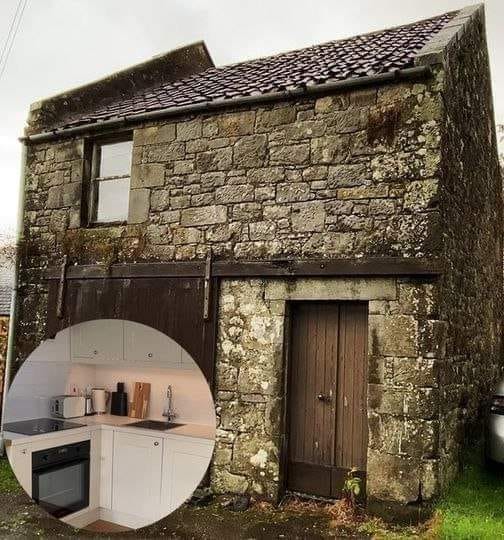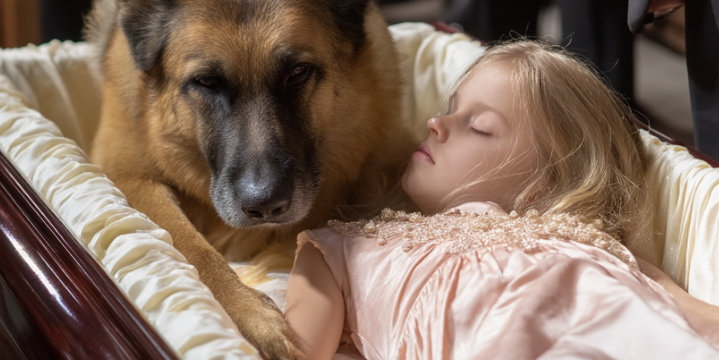During his daily walks along a historic lane called the “Cobble” in his childhood village, Scottish native George Dunnett stumbled upon an abandoned stone cottage. Weathered by time and left untouched for five decades, the small structure stood as a relic of the past. Drawn to its charm and nostalgic value, George decided to purchase the property and embark on an ambitious renovation project to transform it into a stylish and functional tiny home.

George noted that there were three deserted or underutilized structures in the Cobbles. The first was another small stone cottage, shrouded in mystery, with no known information about its previous occupants. Next to it was a slightly larger cottage that, while unoccupied, had been preserved as a museum dedicated to the 18th-century poet Michael Bruce. Finally, there was the two-story stone cottage that had long been used as storage before falling into disrepair. This was the one George set his sights on, determined to give it a new life.
After securing ownership, George quickly realized the extent of the work ahead. The previous owner had gutted the building, leaving only rough stone walls, deteriorated floors, an unusable sliding door, and a hazardous staircase that had to be removed. “There was a lot of structural work that had to be done before I was at the stage of picking out my curtains,” George admitted. The renovation process began with reinforcing the walls and restoring the original fireplaces using brick and cement.
To enhance the structure, George added a new brick stack to the bedroom window frame, a modification that was mirrored on the second floor. Wanting to maximize the interior space, he also raised the ceiling, giving the home an airier and more open feel. One of the first major improvements was repairing the ground and mud floor downstairs with concrete and adding insulation. Immediately, the difference in warmth was noticeable. “It was actually nice to come in here during the cold January weather and have it kind of be semi-warm,” he said.
However, the renovation took an unexpected turn when an inspection revealed that the roof was in terrible condition. This discovery forced George to invest additional money into scaffolding and extensive repairs. Repointing the stonework on the roof not only reinforced the structure but also rejuvenated the cottage’s historic character.
With the exterior stabilized, the interior transformation could begin. Insulation and plasterboard gave the space a more polished appearance, allowing George to visualize how each room would function. Before installing a sash window casing, the bedroom had felt confined, almost like a prison cell. But with the new windows in place, natural light flooded the room, making it far more inviting.
George and his mother painted the walls together, opting for white to create a bright and cheerful atmosphere. To add contrast, he introduced blue-gray accent walls in the bathroom and bedroom. Meanwhile, installing oak flooring significantly enhanced the home’s aesthetic appeal, adding warmth and character to the space.
A local blacksmith crafted the metal stair railing, a sleek addition that complemented the rustic charm of the cottage. Meanwhile, George’s father, despite having no prior experience, laid the final cobblestones at the entrance. His effort paid off, completing the exterior’s transformation. The renovation, which took nearly a year, was a labor of love and perseverance.
Inside, framed photos of the original stone cottage hang near George’s bedroom door, a tribute to the building’s history. He chose a low-profile bed to maintain a minimalist yet elegant look, while using the space under the windows for a compact closet and storage cabinets. The bathroom, though simple, was spacious enough to accommodate a full shower, toilet, sink, mirror, and frosted window for privacy.
The staircase, made from oak to match the flooring, was placed beneath a Velux roof window to allow ample natural light to flood in. A small bookshelf near the stairwell added charm, though George admitted he had yet to read any of the books it held. His workspace, tucked away in a nook next to the railings, overlooked the living room, creating a functional yet cozy work environment.
On the second story, the kitchen took shape with under-cabinet lighting illuminating the countertops, sink, and stove. Below the counter, George installed a compact refrigerator and washing machine for added convenience. Across from his workspace, the living room featured a big-screen TV, a comfortable couch, and a stylish tempered glass coffee table. A picturesque window in the living room provided a stunning view of the hills and his neighbors’ garden.
“Using the money I saved up over the years from my work as a video editor and my YouTube channels, I paid for the house and all of the work and furnishing myself, minus the loan amount,” George said. In total, he estimated that he spent £157,844 ($196,278) on the renovation, including the purchase price.
“I was quite naive about just how long it would take,” he admitted. Initially, the builder estimated the project would take two months and cost £40,000 ($49,739). However, as the work progressed, unforeseen issues arose, ultimately doubling both the timeline and budget.
Now that the renovation is complete, George and his brother are considering purchasing another fixer-upper in the neighborhood. This time, he plans to handle most of the renovations himself. “The next one isn’t as severe a project—it’s just a building that needs some work done inside,” he said. “So I’m going to try and do all the joinery work on that and see how much I can do myself.”
With his first major renovation successfully completed, George has proven that even the most neglected structures can be transformed with vision, determination, and hard work. His journey from discovering an abandoned cottage to turning it into a stylish, cozy home is an inspiring example of how passion and perseverance can breathe new life into forgotten spaces.





